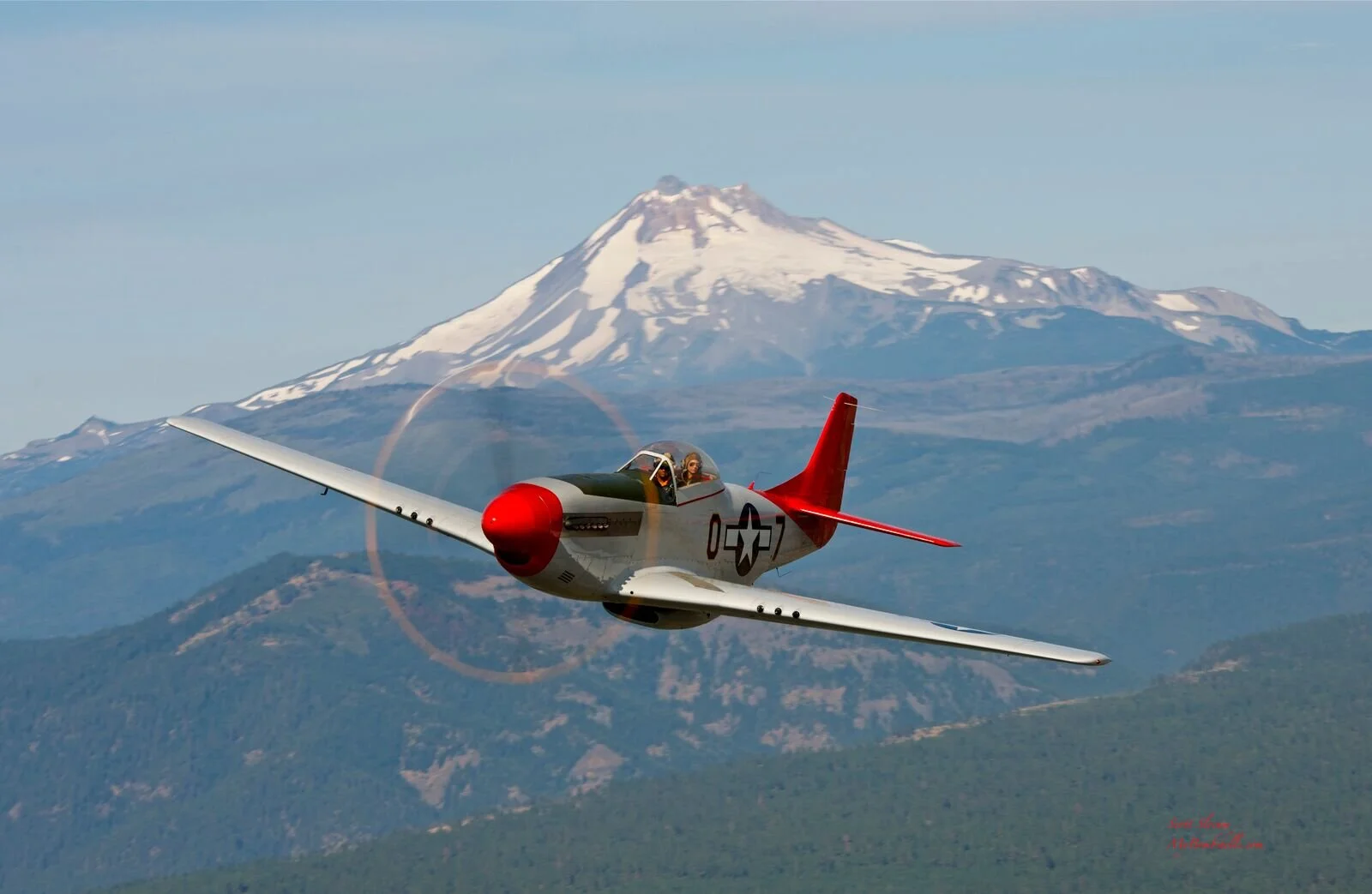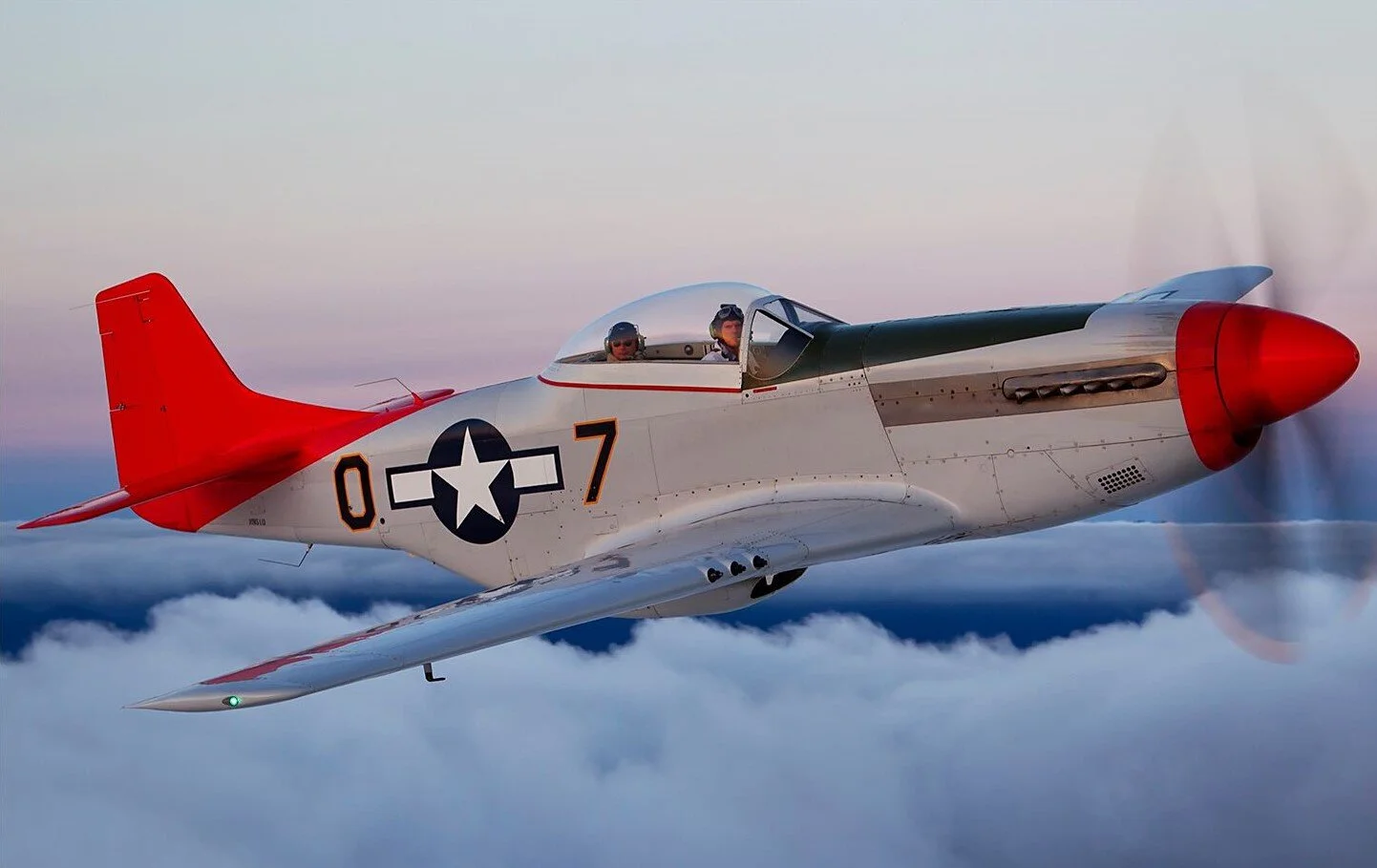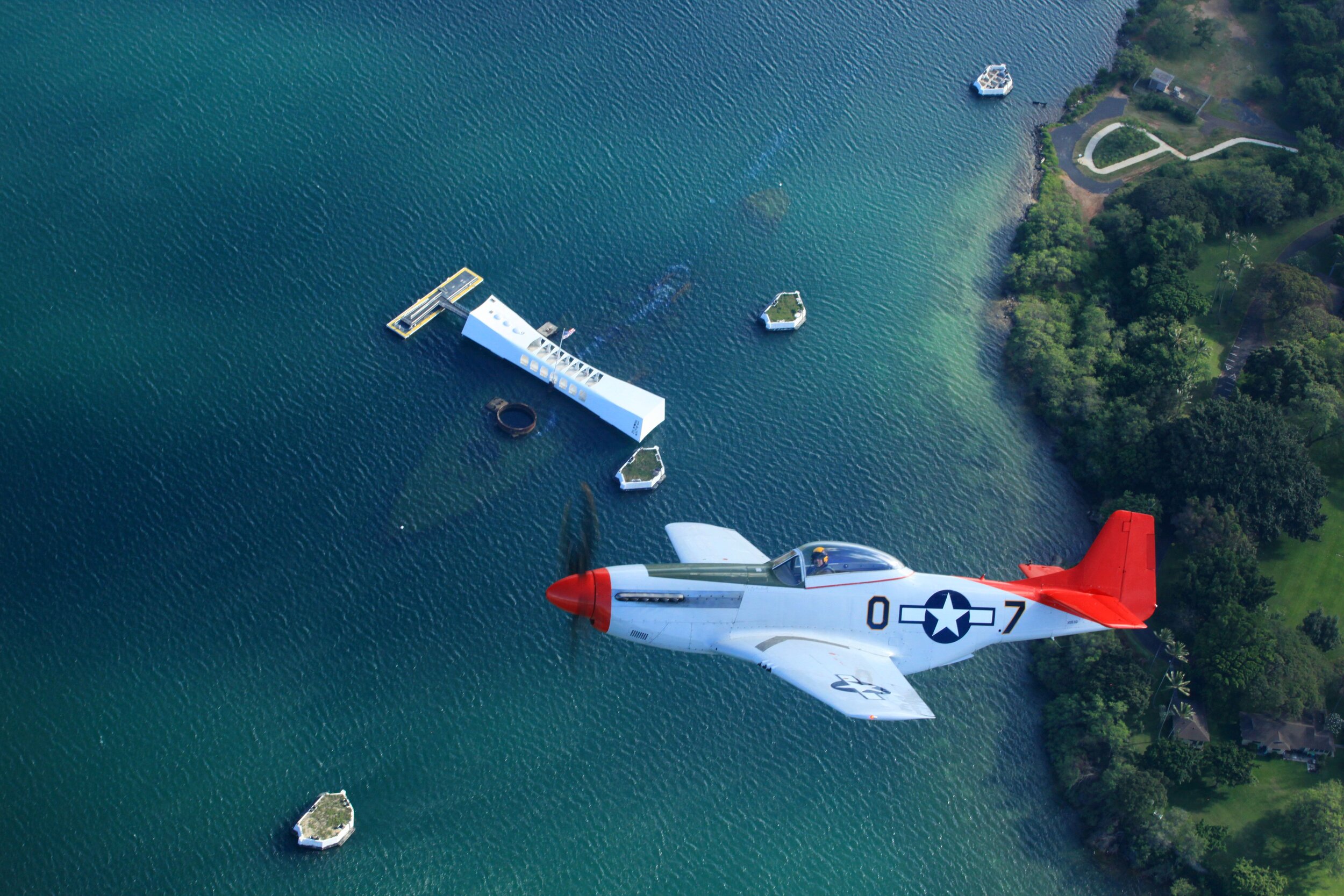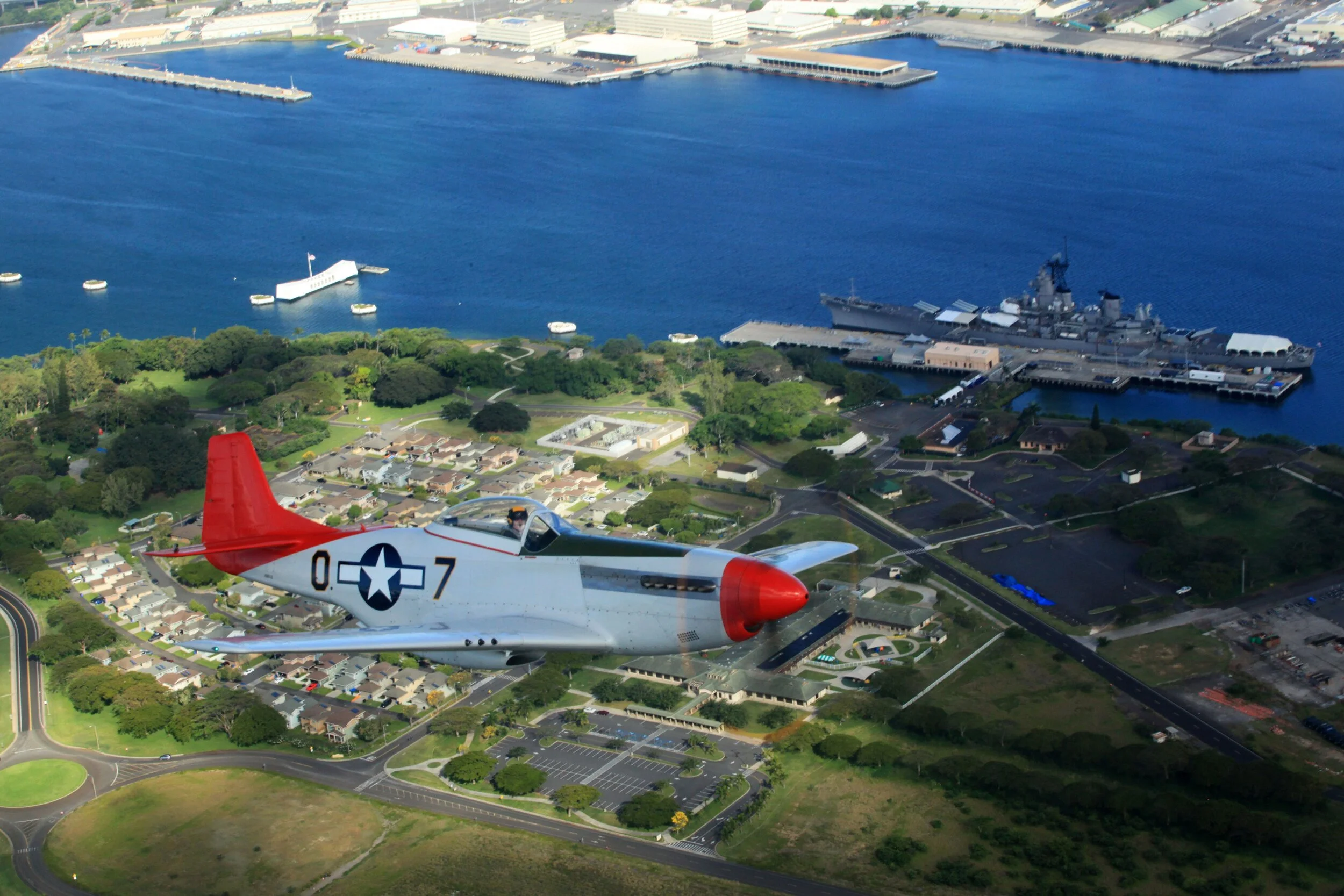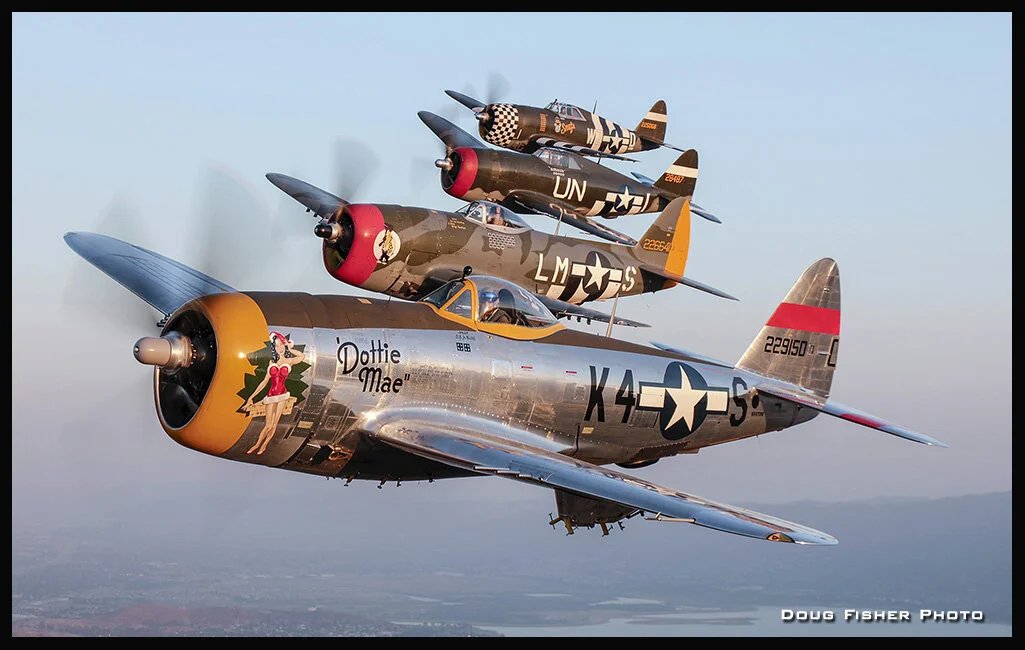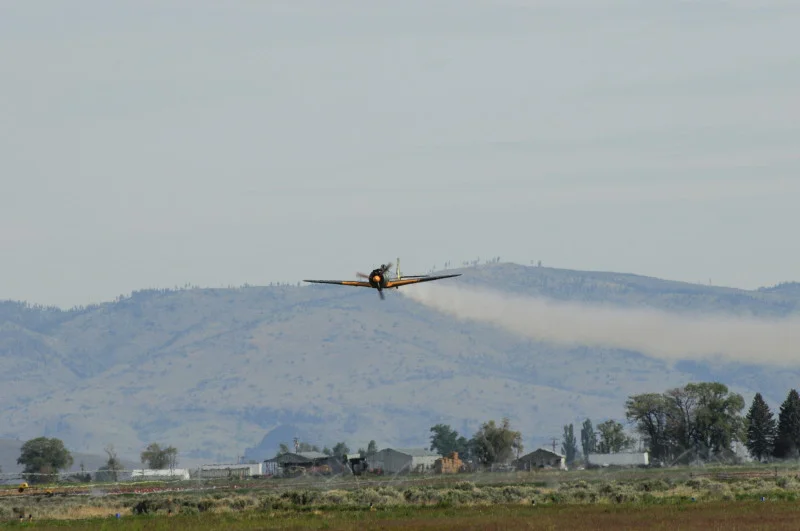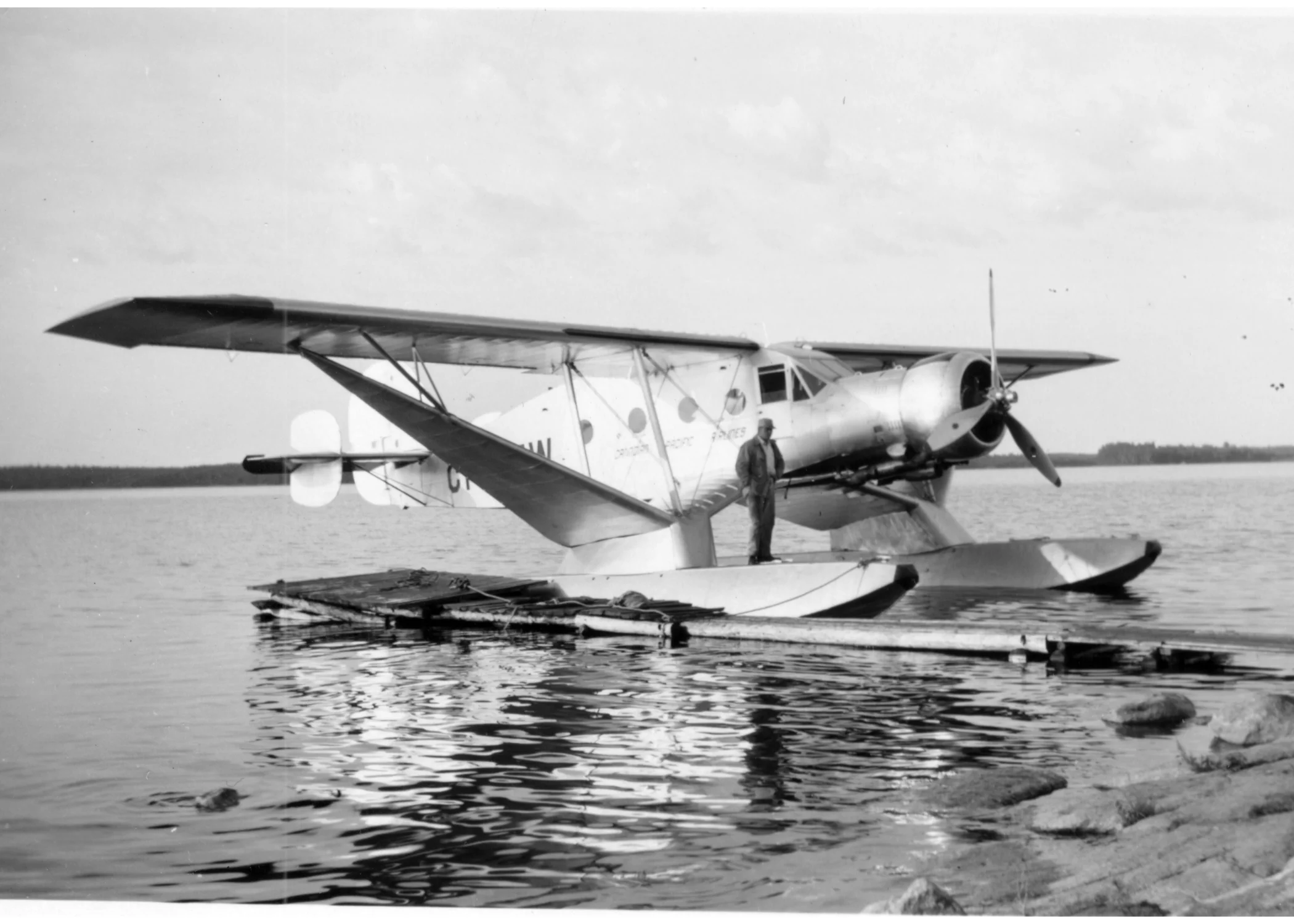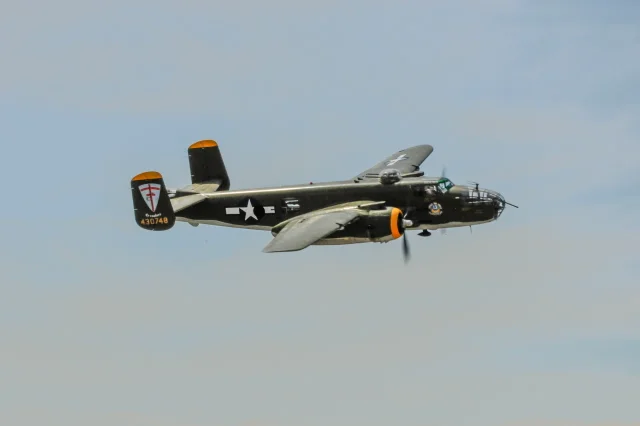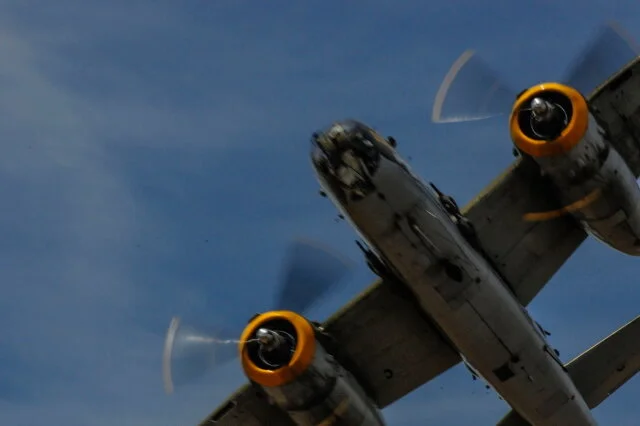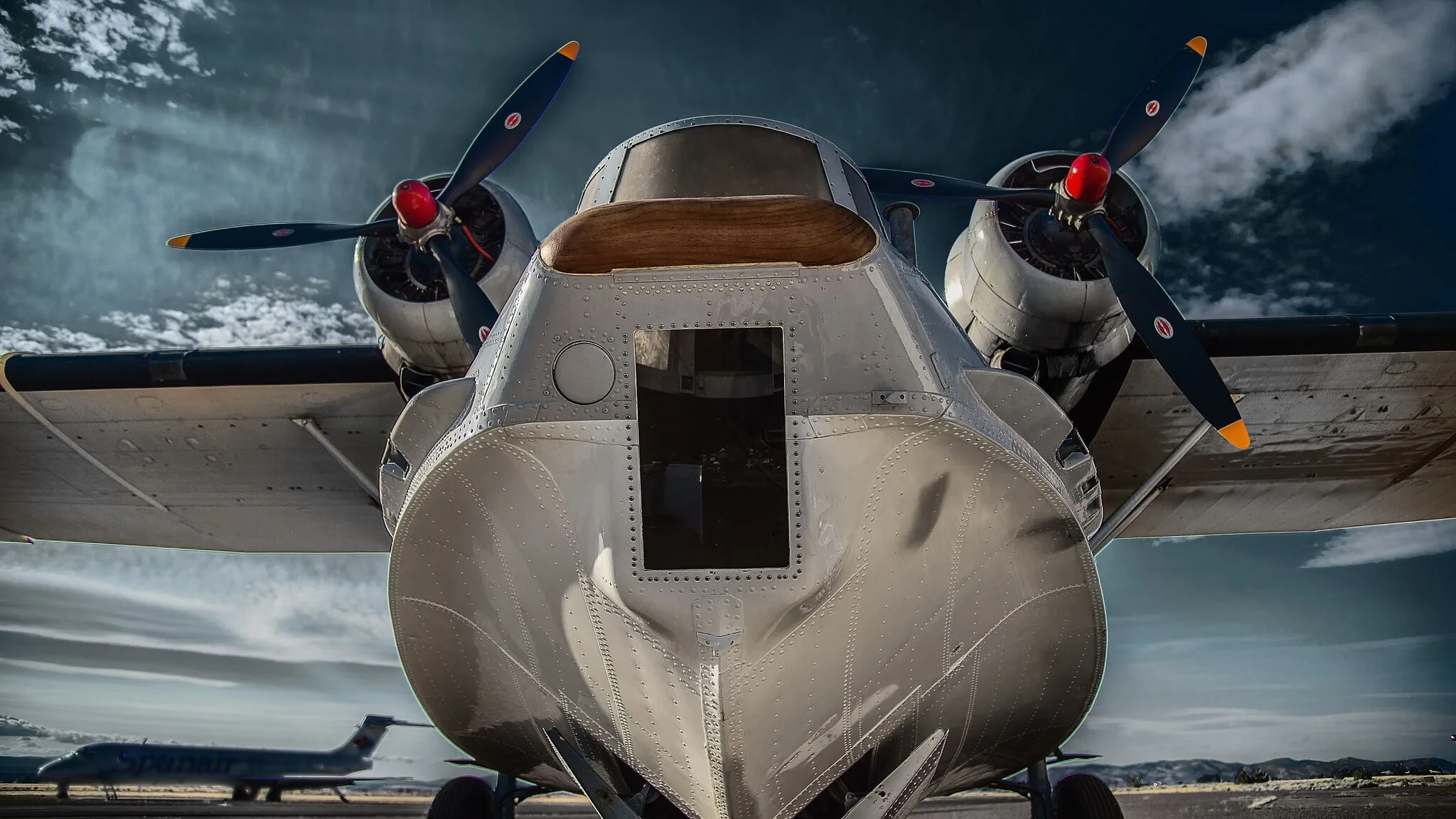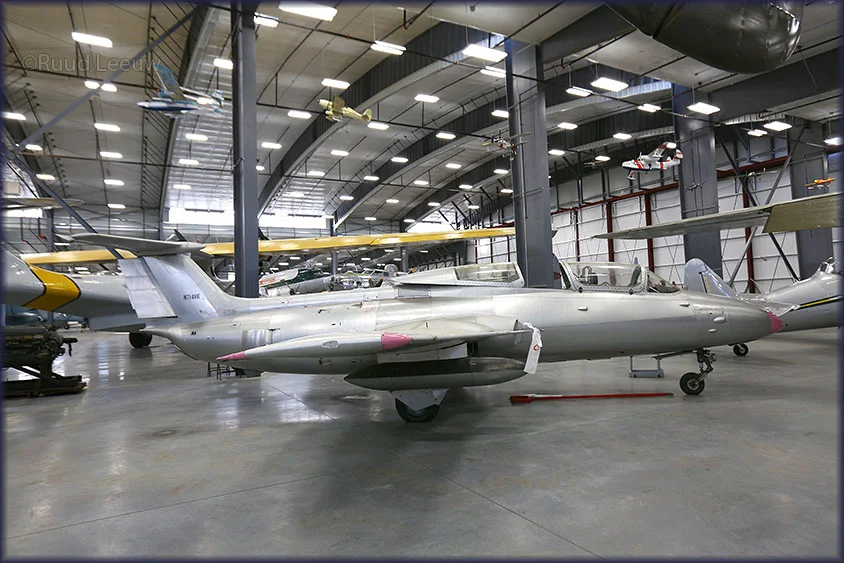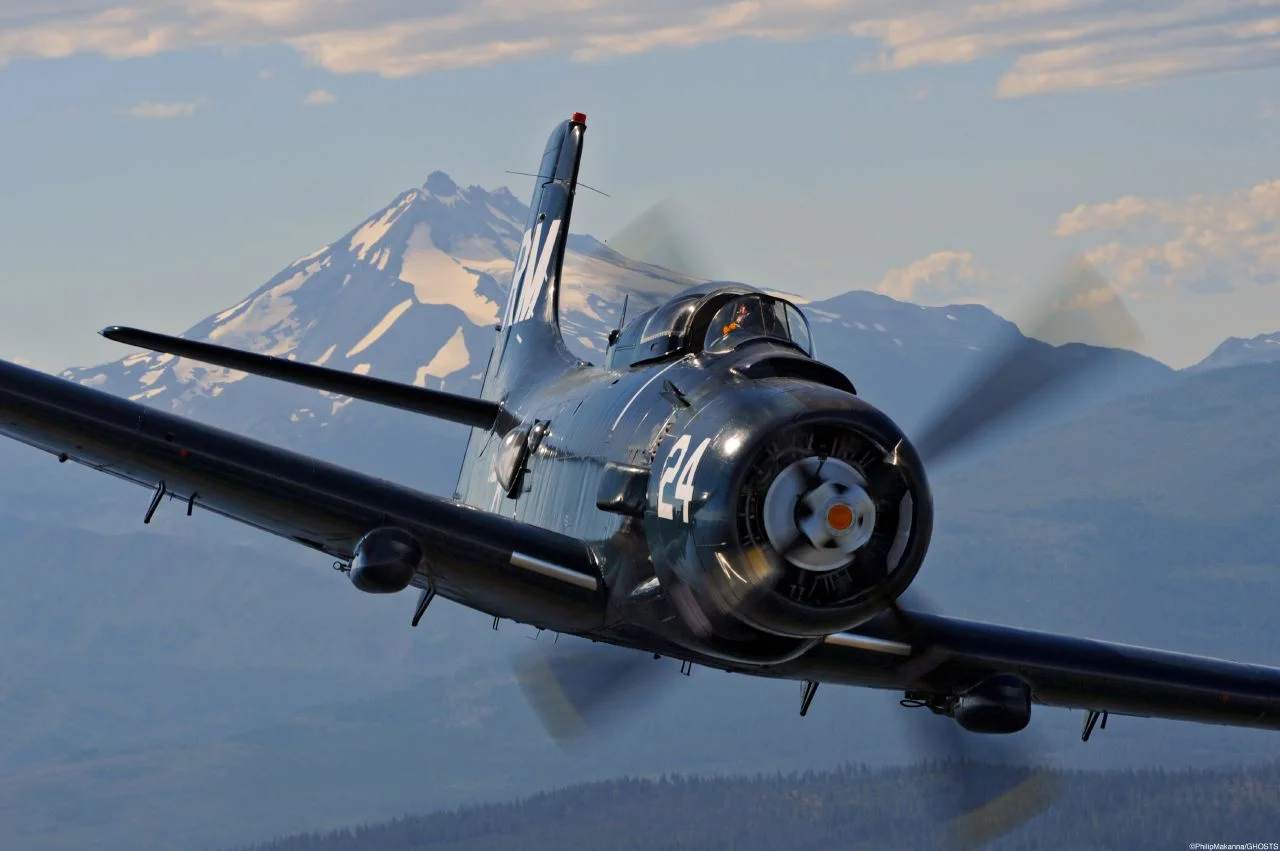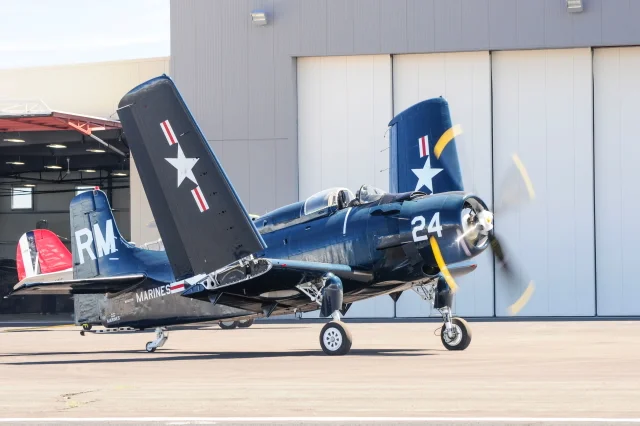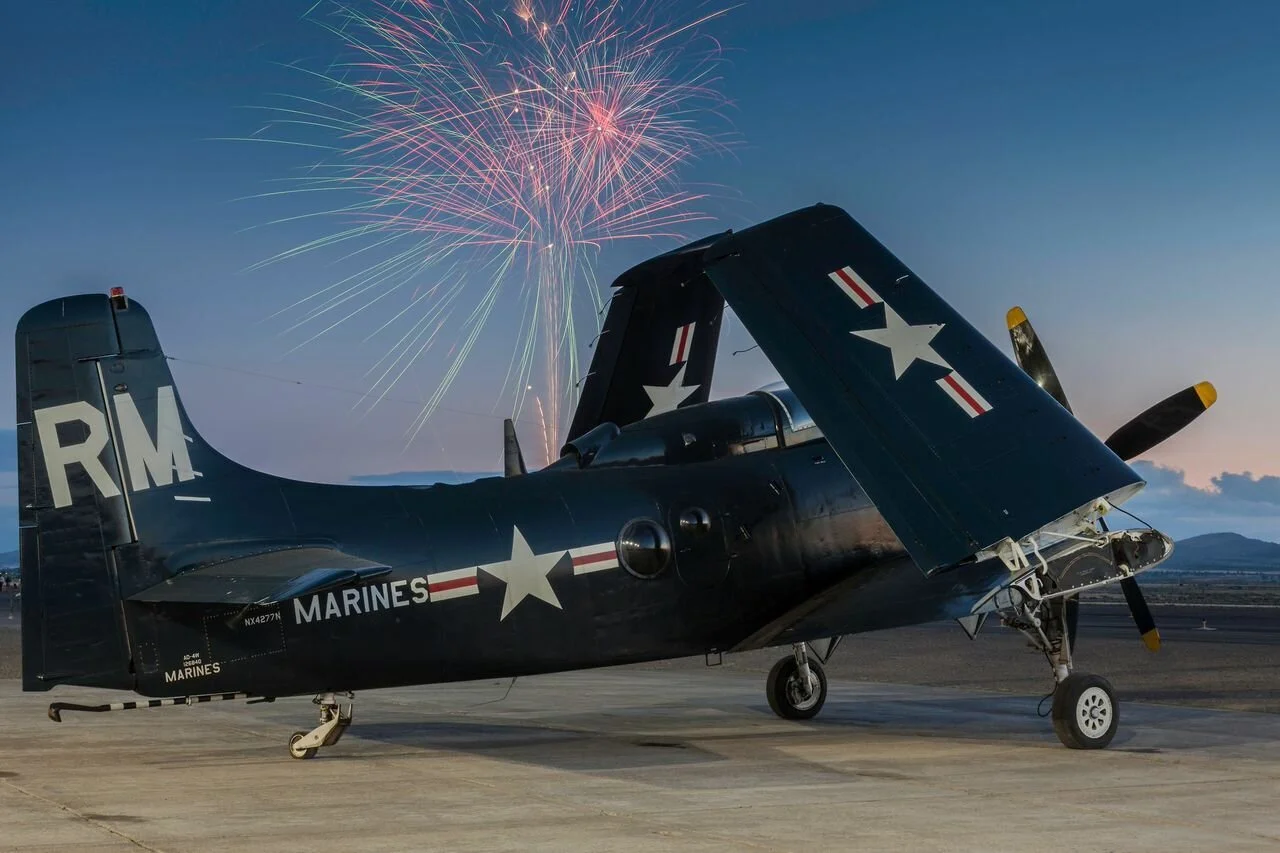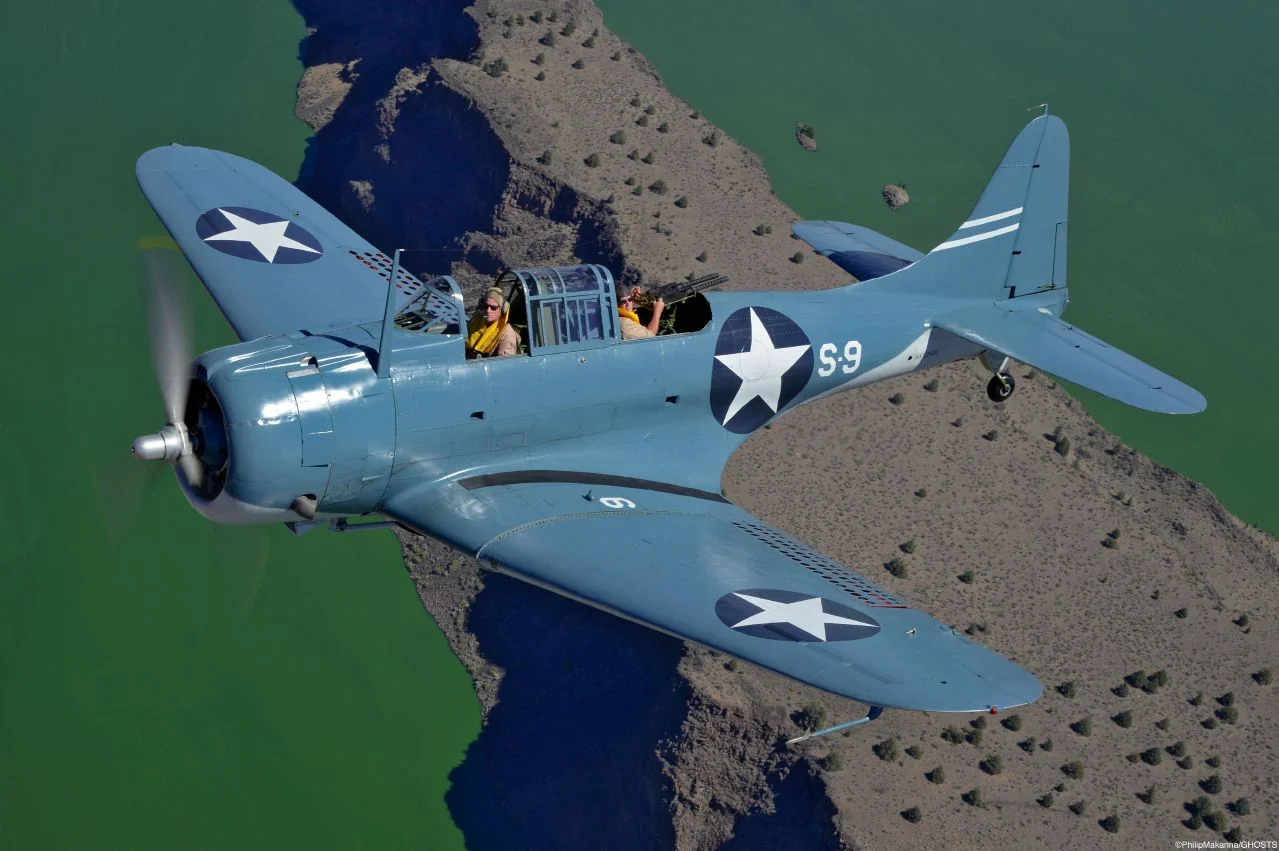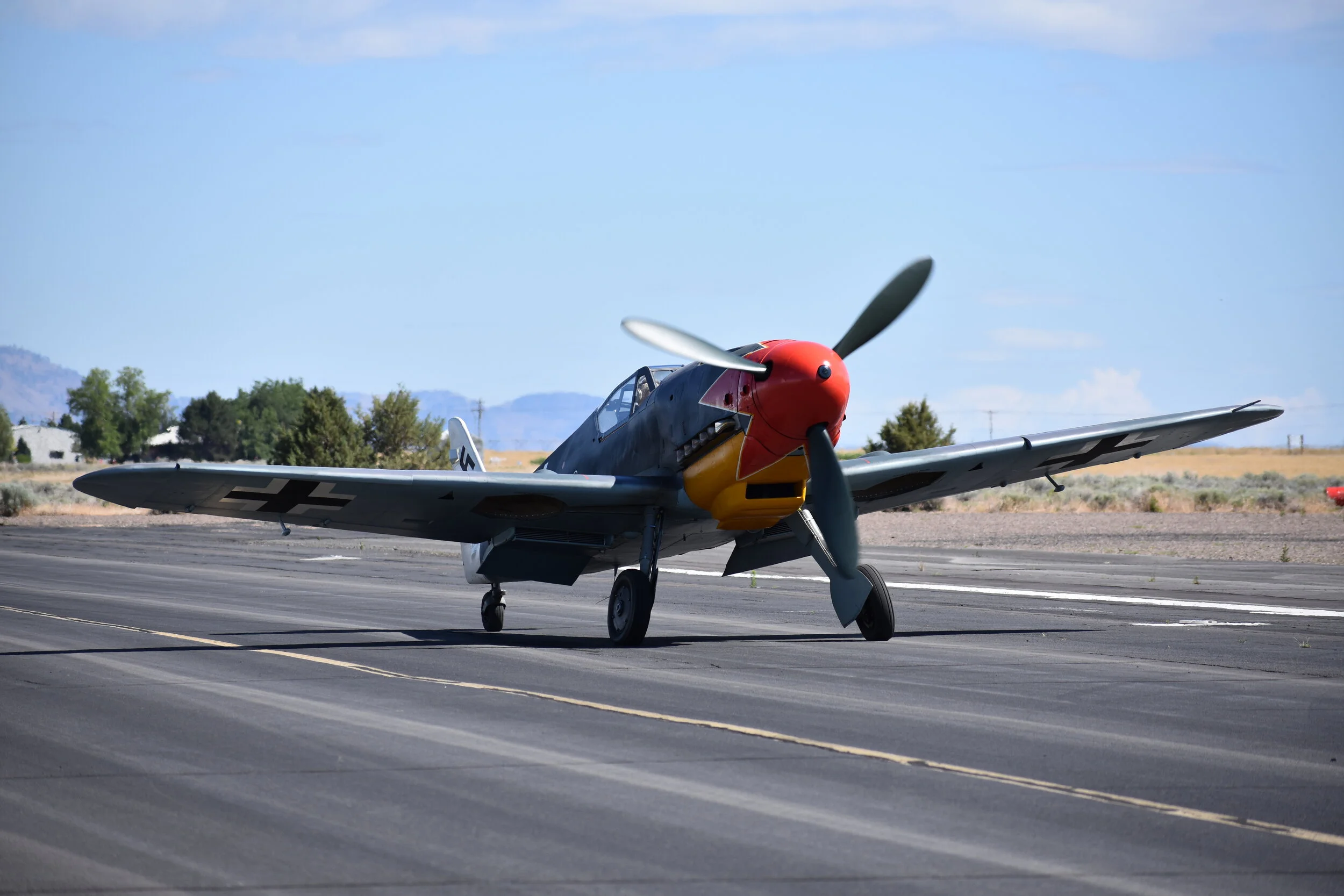NARRATIVE
The Douglas Skyraider was the result of an attempt by the U.S. Navy to combine two methods of attack: the ability to fly from aircraft carriers as well, armed with a large mixture of bombs or torpedoes carried externally. The new aircraft was flight tested in 1945, and a Navy order for 548 units soon followed. Originally designated as the Dauntless II, it later emerged as the AD-1 Skyraider and Navy and Marine Corps squadrons began receiving it in 1946. The Skyraider's design lent itself well to modification and could be altered to carry radar and searchlights for night attack, cameras for reconnaissance, and ECM (Electronic Counter Measures) gear. A new model, the AD-2, was ordered by the Navy and began rolling out of the Douglas facility in California with a strengthened wing, a higher fuel capacity, a 2,700 hp Wright radial engine that gave the AD-2 a top speed of 321 mph, a range of 915 miles, a pair of forward firing 20mm cannon and the ability to carry up to 8,000 lbs. of bombs, torpedoes, rockets, depth-charges, or sea-mines. The Skyraider saw action for the first time in the Korean War where it was used in support of ground troops and performed so well that it was described as "the best and most effective close support airplane in the world." In 1951, a final version of the Skyraider, the AD-5, was introduced with major changes that included a widening of the fuselage to accommodate an additional crew member, an increase in armament to four 20mm cannon, and a conversion kit that would allow the Skyraider to serve as a 12 person transport, freighter, or ambulance. The Skyraider flew its last missions in the skies over Vietnam, where it was superb in the ground attack role and flew until being retired in 1972 - a twenty-five year career for a robust and extremely versatile aircraft design.
SPECIFIC HISTORY
The museum’s Skyraider, a Douglas built AD-4W accepted by the Navy in October 1952, saw service as an anti-submarine warfare weapon at Cherry Point, Quonset Point, Philadelphia, Miramar and Norfolk Naval Air Stations. Declared surplus and put into storage in 1962, a year later it began a ten-year service with the British Royal Navy’s Fleet Air Arm and thereafter service with the Swedish Air Force where it was used for anti-submarine patrols and target towing until the 1980s. Finally retired for good in 1984, it was subsequently sold to several civilian buyers and finally acquired by the museum in 1991.




































